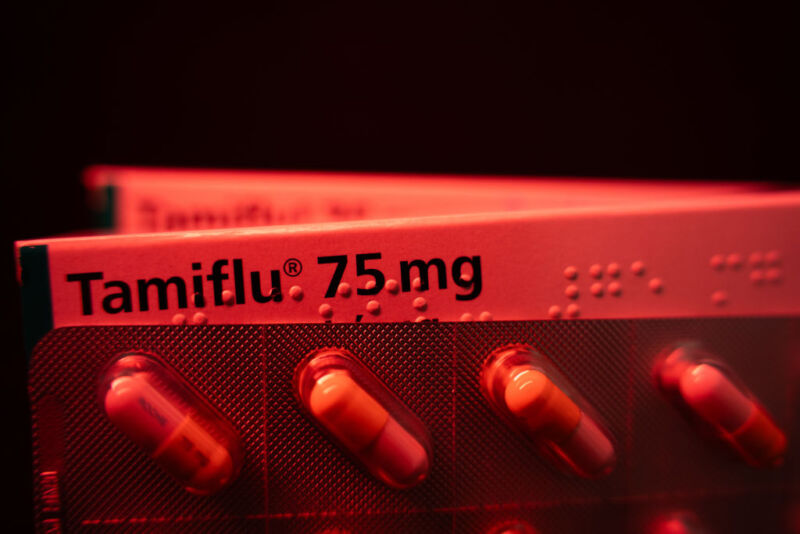
Since reports emerged earlier this year that dairy cows across the country had been infected with H5N1 bird flu, the prospect that the virus could evolve to spark another pandemic has stoked serious concern.
But unlike COVID-19, the flu is an old, well-known foe. And health authorities have reassured the public that the US has squirreled away millions of doses of the flu medication oseltamivir, known under the brand name Tamiflu. As health policy expert Leana S. Wen wrote in a Washington Post opinion piece, the drug “works against seasonal flu and is expected to work well against H5N1.”
While oseltamivir may help in cases of severe flu, some experts are concerned that the US is banking far too much on a so-so drug while failing to prioritize research on new treatments.
Relatively few people have been infected with bird flu, so scientists must rely, in part, on oseltamivir’s track record against seasonal flu to make educated guesses about how well the drug would work against H5N1. But research shows that it doesn’t work particularly well for most people with garden-variety flu and doesn’t keep people out of the hospital. In fact, for standard-risk patients the drug’s effectiveness has proved “kind of crappy,” said Shira Doron, an infectious disease physician at Tufts Medical Center.
And even if it is effective against H5N1, “influenza strains are unpredictable in when they develop resistance,” said infectious disease clinician and researcher Andrew Pavia, who advises government and professional organizations on influenza and pandemic preparedness. In other words, what works today might not work tomorrow.
But promising alternatives are scarce, said Pavia. And largely because antiviral flu drugs haven’t been terribly profitable for drug companies, he said, there are few treatments in the pipeline.
Both Doron and Pavia emphasized that the current risk to Americans—excluding farmworkers—from bird flu is low. At least so far, the disease appears to be hard to catch and rarely spreads from person to person. Since 2022, the US Centers for Disease Control and Prevention has recorded only 15 probable cases. All but one were mild and involved farmworkers who were in direct contact with infected animals.
However, with a couple genetic shifts, the US variant could evolve into a more virulent and widespread virus.
“We are vulnerable,” said Pavia. “And we should have a deeper bench in reserve.”
Not what it seems
Oseltamivir has a controversial past. Governments around the world have spent billions of dollars to stockpile the drug since the early 2000s based on evidence that it reduced the risk of serious complications such as pneumonia for people with seasonal flu.
But as revealed in The BMJ’s open data campaign, and by reporting by The Guardian and other outlets, scientists asserted that the drug’s manufacturer, Roche, had withheld unfavorable data. Evidence of the drug’s benefit, they say, hinged on cherry-picked, mostly unpublished trials funded by Roche.
According to the BMJ, in 2013, after years of pressure from the journal and Cochrane, a not-for-profit organization that conducts systematic reviews of medical treatments and devices, Roche finally released the full set of data it had on oseltamivir. Findings from Cochrane’s updated review incorporating the tranche of new data did not inspire much confidence: The drug shortened seasonal flu symptoms by about half a day for adults and a day for children, but didn’t reduce complications or keep people out of the hospital. It also increased the risk of nausea and vomiting.
Canadian researchers also concluded that oseltamivir did not reduce hospitalizations in an analysis of 15 clinical trials published in JAMA Internal Medicine last year.
Today, most experts agree that the best use of the drug is for people who are seriously ill or are at higher risk for complications. While there is little data from randomized clinical trials focused exclusively on that group, said Pavia, the overall weight of the evidence supports a significant benefit for high-risk or hospitalized patients.
